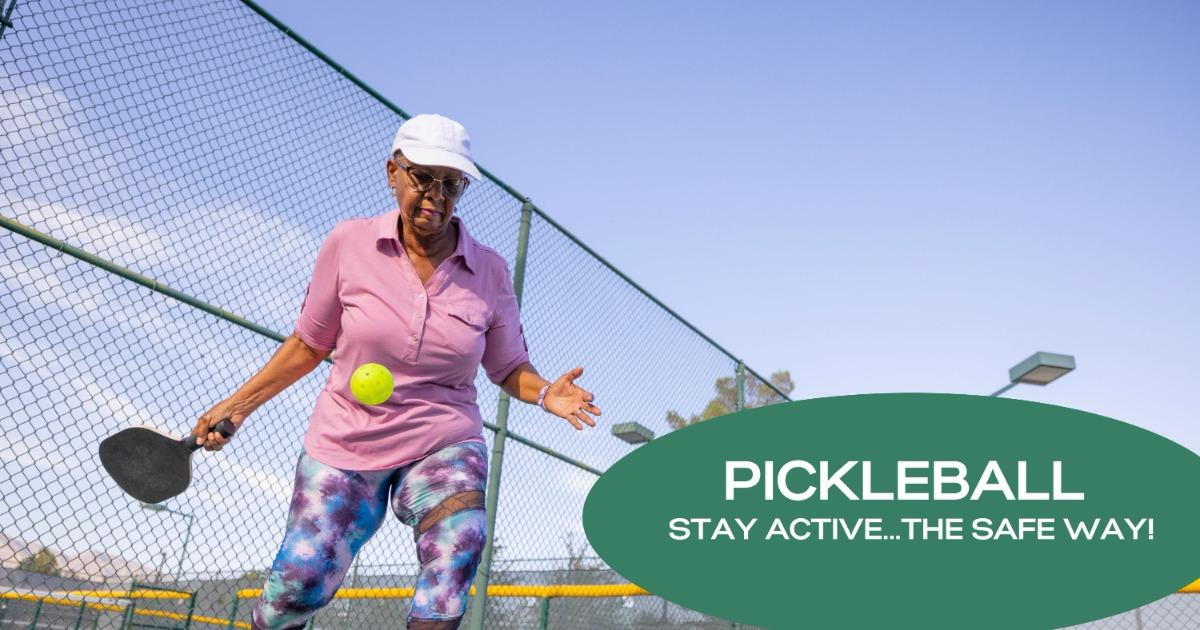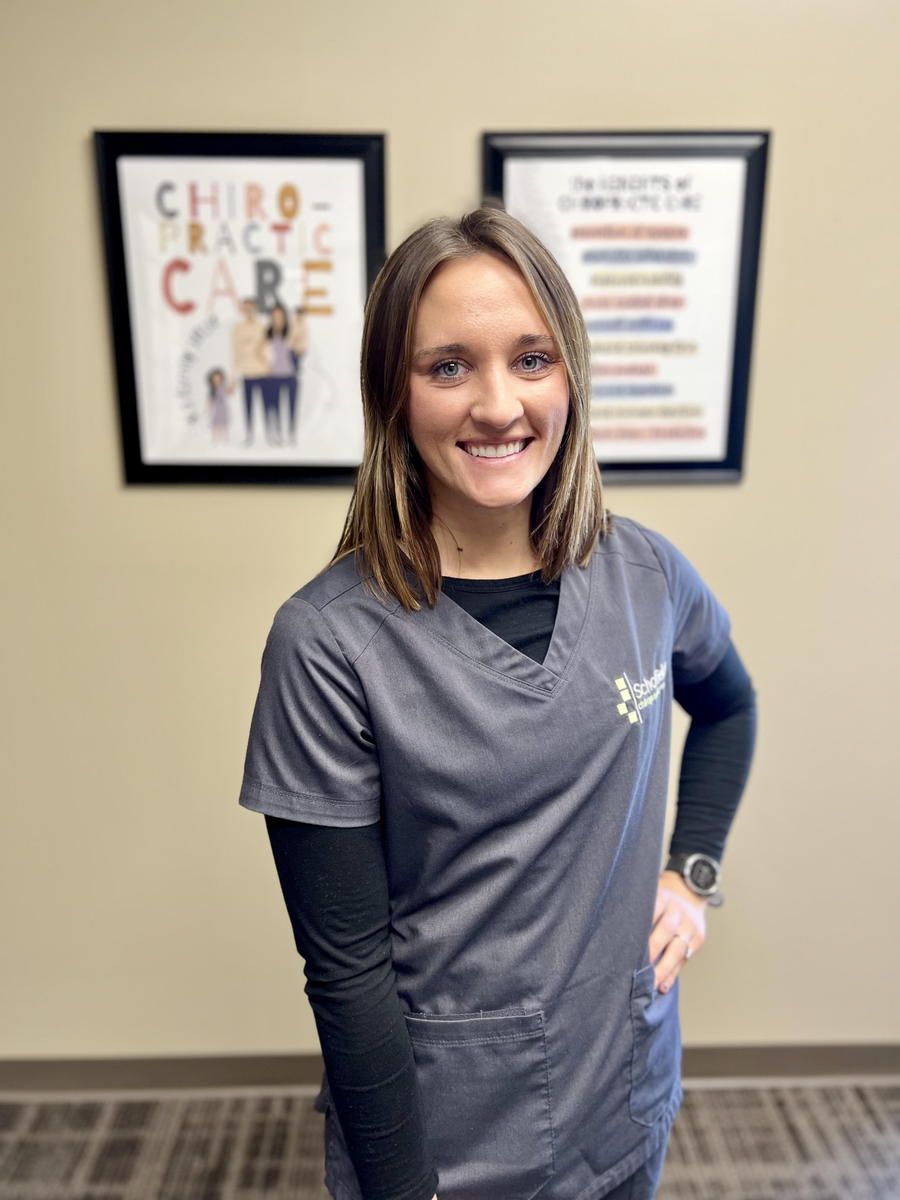Stay Active with Pickleball...The Safe Way!

- posted: Jul. 12, 2024
Pickleball is a great way to stay active and work towards a healthy lifestyle in a fun way—there’s no wonder it has been the fastest-growing sport in the United States for the past 3 years. According to the Association of Pickleball Professionals (APP) in 2023, there were an estimated 48.3 million pickleball players in the United States. We are lucky with the facilities and resources we have in the Cedar Valley to participate in the sport as well. My husband and I love to go to the court and play for a couple hours every week. However, with this exponential growth also comes an increased number of pickleball injuries. This is why it is important to find ways to prevent injuries and play the game safely.
What is causing the rise in pickleball injuries?
There are a couple of factors that could contribute to the number of injuries in pickleball. The first is the availability for all ages to participate in the sport. The largest group of pickleball players is age 18-34, however, you will see players of all ages participating. While it is great that everyone is able to participate, some individuals may not have been physically active in some time, and this sudden increase in activity level can also increase the risk of injury. In addition to an increase in physical activity in general, even those who are used to a higher level of physical activity may not have a background in racquet sports. In other words, you may not be familiar with or used to the upper body movements executed when playing, specifically those utilizing the shoulders, wrists, and elbows. While pickleball is a lot of upper extremity work, your lower body is also utilized when moving around the court, specifically side-to-side motion. If your body isn’t used to moving around in this way, it may not be prepared, making you more susceptible to injury during the game.
What are some common pickleball injuries?
Both your upper and lower body are susceptible to injury when playing pickleball. For your upper body, the elbow and shoulder are the most common areas injured when playing with lateral epicondylitis (tennis elbow) and rotator cuff strains being the specific diagnoses. The biomechanics are similar to the paddle swing used in tennis—there are a lot of wrist and elbow movements in pickleball, which can overload the muscles and lead to injury.
In regard to the lower body, the knees and ankles seem to be the most commonly injured when participating in the sport. The quick movements forward and backward, as well as the squats and lunges in the kitchen (the non-valley zone) can lead to overloading the patellar tendon, leading to patellar tendinopathy, and even ankle sprains. The low back and hip flexors are also common areas to develop a pickleball injury. With all of the squats, lateral lunges, and hip rotation, the muscles around the low back and hips can lead to flexion and extension intolerant discomfort.
What can you do to prevent common pickleball injuries?
Here are some tips to consider in order to prevent injury and practice the sport safely:
DO: Warm Up
Although you may be tempted to just step on the court and play, if you are not allowing your body to properly warm up, you could increase your risk of injury. Aim to do a 5-to-10-minute warm-up and include some light cardio movements and upper body stretches and exercises to prepare for swinging the paddle. While preparing for the dink shots in the kitchen are important, make sure you are also warming up with some drop shots and serves to warm up the shoulder range of motion and velocity. Not only will this reduce your risk of injury, it can also help your game!
DON'T: Overdo It
Trust me, once you decide to go out and play for the first time, you’ll want to go again right away. It is not uncommon to start playing pickleball multiple days in a row for several hours at a time. This sudden increase in load can lead to an increase in injury risk as well. This is why it is important to gradually increase the amount of load, making sure you schedule recovery days so your body can adapt.
DO: Strength Training Exercises
Another way to prevent pickleball injuries is to condition your body so it can better tolerate the increased load. Strength exercises for the rotator cuff, core, and knees are all areas that pickleball players would benefit from. Focus first on general strength in those areas and then work into performance, and quicker movements that imitate the movements in pickleball. Some exercises for building muscles around the rotator cuff include shoulder rows and movements with internal and external shoulder rotation; some core strengthening exercises include planks, side planks, and dead bugs; and exercises to help build the muscles around the knee include knee extensions, lateral band walks, lateral lunges, and calf raises.
Taking these steps can help you continue to play the sport you love without injury as well as allow you to continue to be involved in the pickleball community. This community is a great way to meet new people, build connections, and satisfy you socially. Check out the Cedar Falls Recreation website for more information regarding pickleball in the Cedar Falls area.

Dr. Lauren Block earned advanced credentialing in prenatal care from Palmer College of Chiropractic. She is a member of the International Chiropractic Pediatrics Association and is certified in the Webster Technique which is specifically designed to care for pregnant mothers.

- posted: Jul. 12, 2024
Pickleball is a great way to stay active and work towards a healthy lifestyle in a fun way—there’s no wonder it has been the fastest-growing sport in the United States for the past 3 years. According to the Association of Pickleball Professionals (APP) in 2023, there were an estimated 48.3 million pickleball players in the United States. We are lucky with the facilities and resources we have in the Cedar Valley to participate in the sport as well. My husband and I love to go to the court and play for a couple hours every week. However, with this exponential growth also comes an increased number of pickleball injuries. This is why it is important to find ways to prevent injuries and play the game safely.
What is causing the rise in pickleball injuries?
There are a couple of factors that could contribute to the number of injuries in pickleball. The first is the availability for all ages to participate in the sport. The largest group of pickleball players is age 18-34, however, you will see players of all ages participating. While it is great that everyone is able to participate, some individuals may not have been physically active in some time, and this sudden increase in activity level can also increase the risk of injury. In addition to an increase in physical activity in general, even those who are used to a higher level of physical activity may not have a background in racquet sports. In other words, you may not be familiar with or used to the upper body movements executed when playing, specifically those utilizing the shoulders, wrists, and elbows. While pickleball is a lot of upper extremity work, your lower body is also utilized when moving around the court, specifically side-to-side motion. If your body isn’t used to moving around in this way, it may not be prepared, making you more susceptible to injury during the game.
What are some common pickleball injuries?
Both your upper and lower body are susceptible to injury when playing pickleball. For your upper body, the elbow and shoulder are the most common areas injured when playing with lateral epicondylitis (tennis elbow) and rotator cuff strains being the specific diagnoses. The biomechanics are similar to the paddle swing used in tennis—there are a lot of wrist and elbow movements in pickleball, which can overload the muscles and lead to injury.
In regard to the lower body, the knees and ankles seem to be the most commonly injured when participating in the sport. The quick movements forward and backward, as well as the squats and lunges in the kitchen (the non-valley zone) can lead to overloading the patellar tendon, leading to patellar tendinopathy, and even ankle sprains. The low back and hip flexors are also common areas to develop a pickleball injury. With all of the squats, lateral lunges, and hip rotation, the muscles around the low back and hips can lead to flexion and extension intolerant discomfort.
What can you do to prevent common pickleball injuries?
Here are some tips to consider in order to prevent injury and practice the sport safely:
DO: Warm Up
Although you may be tempted to just step on the court and play, if you are not allowing your body to properly warm up, you could increase your risk of injury. Aim to do a 5-to-10-minute warm-up and include some light cardio movements and upper body stretches and exercises to prepare for swinging the paddle. While preparing for the dink shots in the kitchen are important, make sure you are also warming up with some drop shots and serves to warm up the shoulder range of motion and velocity. Not only will this reduce your risk of injury, it can also help your game!
DON'T: Overdo It
Trust me, once you decide to go out and play for the first time, you’ll want to go again right away. It is not uncommon to start playing pickleball multiple days in a row for several hours at a time. This sudden increase in load can lead to an increase in injury risk as well. This is why it is important to gradually increase the amount of load, making sure you schedule recovery days so your body can adapt.
DO: Strength Training Exercises
Another way to prevent pickleball injuries is to condition your body so it can better tolerate the increased load. Strength exercises for the rotator cuff, core, and knees are all areas that pickleball players would benefit from. Focus first on general strength in those areas and then work into performance, and quicker movements that imitate the movements in pickleball. Some exercises for building muscles around the rotator cuff include shoulder rows and movements with internal and external shoulder rotation; some core strengthening exercises include planks, side planks, and dead bugs; and exercises to help build the muscles around the knee include knee extensions, lateral band walks, lateral lunges, and calf raises.
Taking these steps can help you continue to play the sport you love without injury as well as allow you to continue to be involved in the pickleball community. This community is a great way to meet new people, build connections, and satisfy you socially. Check out the Cedar Falls Recreation website for more information regarding pickleball in the Cedar Falls area.

Dr. Lauren Block earned advanced credentialing in prenatal care from Palmer College of Chiropractic. She is a member of the International Chiropractic Pediatrics Association and is certified in the Webster Technique which is specifically designed to care for pregnant mothers.
1001 Hudson Rd., Ste. A
Cedar Falls, IA, 50613
